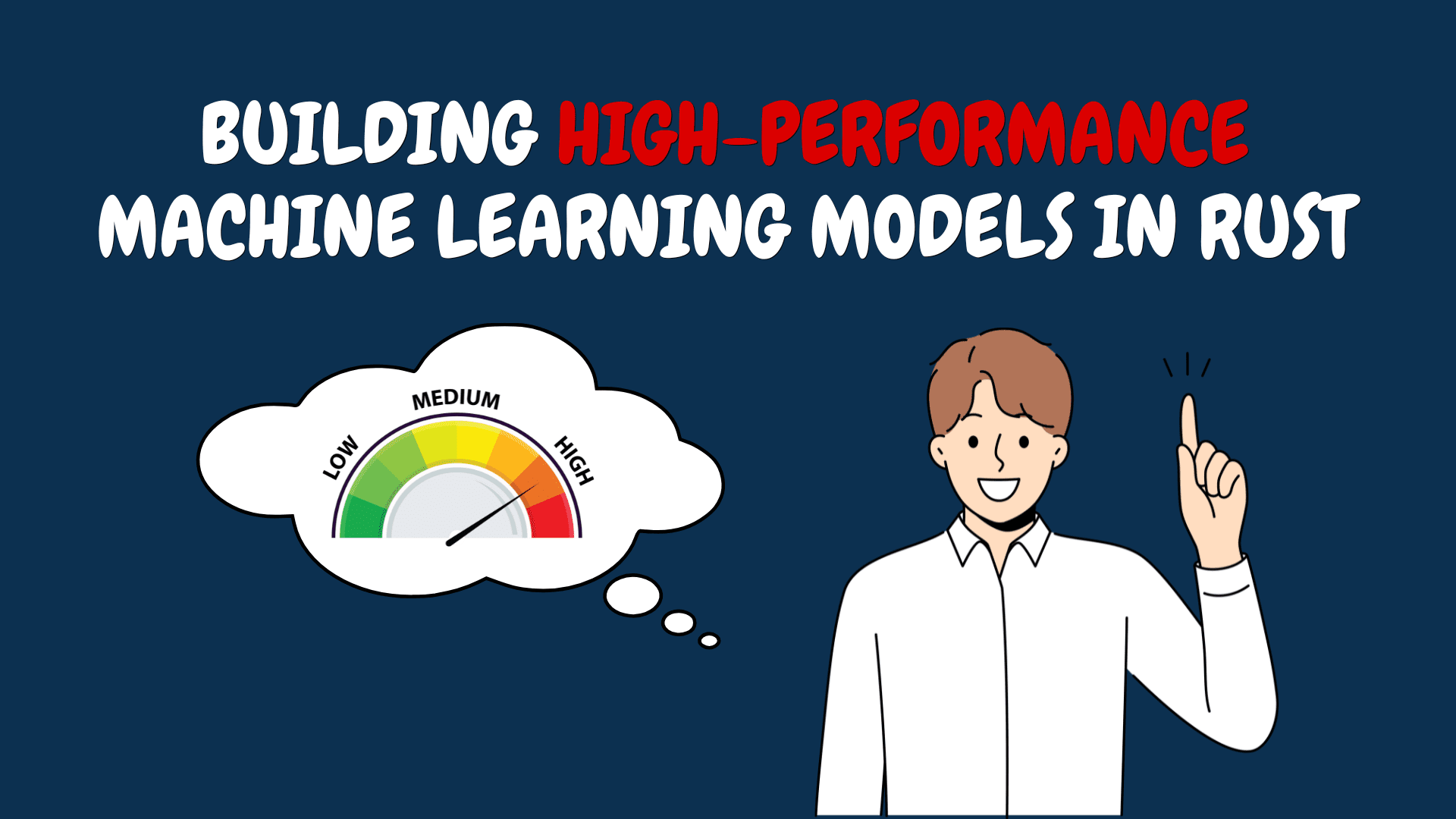Leveraging AI in Building Scalable ETL Pipelines
Introduction Extract, Transform, Load (ETL) pipelines serve as the foundation for data-driven enterprises. They facilitate the extraction of data from diverse sources, convert it into a usable format, and load it into a target system for analysis and for informed decision-making. As the volume of data skyrockets and the demand for real-time processing intensifies, traditional ETL pipelines encounter significant hurdles in terms of scalability, efficiency,storage and adaptability. This is where Artificial Intelligence (AI) becomes a pivotal factor. AI can greatly improve the scalability, efficiency, and intelligence of ETL pipelines. By harnessing AI technologies, organizations can automate intricate tasks, streamline data processing, and effortlessly manage large datasets. This article delves into the integration of AI within ETL pipelines, featuring practical examples to clarify essential concepts. 1. Understanding ETL Pipelines 1.1 What is an ETL Pipeline? An ETL pipeline is a process that involves: Extract: Data is extracted from various sources such as databases, APIs, logs, or files. Transform: The extracted data is cleaned, enriched, and transformed into a format suitable for analysis. Load: The transformed data is loaded into a target system, such as a data warehouse, data lake, or database. 1.2 Challenges in Traditional ETL Pipelines Scalability: Handling large volumes of data can be challenging, especially when data sources and formats are diverse. Complexity: As data sources and transformations become more complex, maintaining and updating ETL pipelines can be difficult. Latency: Traditional ETL pipelines may not be able to process data in real-time, leading to delays in decision-making. Error Handling: Manual error handling and data quality checks can be time-consuming and prone to errors. 2. The Role of AI in ETL Pipelines AI can address many of the challenges faced by traditional ETL pipelines. Here are some ways AI can be leveraged: 2.1 Automated Data Extraction & Schema Detection. AI-driven tools automatically extract data from APIs, logs, and documents, reducing manual intervention. AI automates extraction of data from various sources, including unstructured data such as text, images, and videos. Natural Language Processing (NLP) and Computer Vision (CV) techniques can be used to extract meaningful information from unstructured data. Example: Using NLP to extract customer sentiment from social media posts. from textblob import TextBlob # Sample social media post post = "I love the new features in this product! It's amazing." # Sentiment analysis using TextBlob analysis = TextBlob(post) sentiment = analysis.sentiment.polarity print(f"Sentiment: {sentiment}") 2.2 Intelligent Data Transformation & cleaning AI detects missing values, anomalies, and inconsistencies in data and applies intelligent transformations. AI can automate and optimize data transformation tasks. Machine Learning (ML) models can be used to clean, enrich, and transform data more efficiently. For example, AI can automatically detect and correct errors in data, impute missing values, or normalize data. Example: Using a machine learning model to impute missing values in a dataset. from sklearn.impute import KNNImputer import numpy as np # Sample dataset with missing values data = np.array([[1, 2, np.nan], [4, np.nan, 6], [7, 8, 9]]) # Impute missing values using KNN imputer = KNNImputer(n_neighbors=2) imputed_data = imputer.fit_transform(data) print(imputed_data) 2.3 Real-Time Data Processing & Streaming ETL – AI improves event-driven architectures by enabling real-time data ingestion and decision-making. AI can enable real-time data processing by using stream processing frameworks such as Apache Kafka or Apache Flink, combined with AI models for real-time analytics. This allows organizations to make decisions based on the most up-to-date information. Example: Real-time anomaly detection in a data stream using an AI model. from sklearn.ensemble import IsolationForest import numpy as np # Sample data stream data_stream = np.array([1.0, 1.1, 1.2, 1.3, 10.0, 1.4, 1.5]) # Real-time anomaly detection using Isolation Forest model = IsolationForest(contamination=0.1) predictions = model.fit_predict(data_stream.reshape(-1, 1)) print(f"Anomalies: {data_stream[predictions == -1]}") 2.4 Automated Error Handling and Data Quality Checks AI can automate error handling and data quality checks by using ML models to detect anomalies, inconsistencies, or errors in the data. This reduces the need for manual intervention and ensures higher data quality. Example: Using an AI model to detect outliers in a dataset. from sklearn.ensemble import IsolationForest import numpy as np # Sample dataset data = np.array([[1.0], [1.1], [1.2], [1.3], [10.0], [1.4], [1.5]]) # Outlier detection using Isolation Forest model = IsolationForest(contami

Introduction
Extract, Transform, Load (ETL) pipelines serve as the foundation for data-driven enterprises. They facilitate the extraction of data from diverse sources, convert it into a usable format, and load it into a target system for analysis and for informed decision-making. As the volume of data skyrockets and the demand for real-time processing intensifies, traditional ETL pipelines encounter significant hurdles in terms of scalability, efficiency,storage and adaptability.
This is where Artificial Intelligence (AI) becomes a pivotal factor. AI can greatly improve the scalability, efficiency, and intelligence of ETL pipelines. By harnessing AI technologies, organizations can automate intricate tasks, streamline data processing, and effortlessly manage large datasets.
This article delves into the integration of AI within ETL pipelines, featuring practical examples to clarify essential concepts.
1. Understanding ETL Pipelines
1.1 What is an ETL Pipeline?
An ETL pipeline is a process that involves:
- Extract: Data is extracted from various sources such as databases, APIs, logs, or files.
- Transform: The extracted data is cleaned, enriched, and transformed into a format suitable for analysis.
- Load: The transformed data is loaded into a target system, such as a data warehouse, data lake, or database.
1.2 Challenges in Traditional ETL Pipelines
- Scalability: Handling large volumes of data can be challenging, especially when data sources and formats are diverse.
Complexity: As data sources and transformations become more complex, maintaining and updating ETL pipelines can be difficult.
Latency: Traditional ETL pipelines may not be able to process data in real-time, leading to delays in decision-making.
Error Handling: Manual error handling and data quality checks can be time-consuming and prone to errors.
2. The Role of AI in ETL Pipelines
AI can address many of the challenges faced by traditional ETL pipelines. Here are some ways AI can be leveraged:
2.1 Automated Data Extraction & Schema Detection.
AI-driven tools automatically extract data from APIs, logs, and documents, reducing manual intervention.
AI automates extraction of data from various sources, including unstructured data such as text, images, and videos. Natural Language Processing (NLP) and Computer Vision (CV) techniques can be used to extract meaningful information from unstructured data.
Example: Using NLP to extract customer sentiment from social media posts.
from textblob import TextBlob
# Sample social media post
post = "I love the new features in this product! It's amazing."
# Sentiment analysis using TextBlob
analysis = TextBlob(post)
sentiment = analysis.sentiment.polarity
print(f"Sentiment: {sentiment}")
2.2 Intelligent Data Transformation & cleaning
AI detects missing values, anomalies, and inconsistencies in data and applies intelligent transformations.
AI can automate and optimize data transformation tasks. Machine Learning (ML) models can be used to clean, enrich, and transform data more efficiently. For example, AI can automatically detect and correct errors in data, impute missing values, or normalize data.
Example: Using a machine learning model to impute missing values in a dataset.
from sklearn.impute import KNNImputer
import numpy as np
# Sample dataset with missing values
data = np.array([[1, 2, np.nan], [4, np.nan, 6], [7, 8, 9]])
# Impute missing values using KNN
imputer = KNNImputer(n_neighbors=2)
imputed_data = imputer.fit_transform(data)
print(imputed_data)
2.3 Real-Time Data Processing & Streaming ETL – AI improves event-driven architectures by enabling real-time data ingestion and decision-making.
AI can enable real-time data processing by using stream processing frameworks such as Apache Kafka or Apache Flink, combined with AI models for real-time analytics. This allows organizations to make decisions based on the most up-to-date information.
Example: Real-time anomaly detection in a data stream using an AI model.
from sklearn.ensemble import IsolationForest
import numpy as np
# Sample data stream
data_stream = np.array([1.0, 1.1, 1.2, 1.3, 10.0, 1.4, 1.5])
# Real-time anomaly detection using Isolation Forest
model = IsolationForest(contamination=0.1)
predictions = model.fit_predict(data_stream.reshape(-1, 1))
print(f"Anomalies: {data_stream[predictions == -1]}")
2.4 Automated Error Handling and Data Quality Checks
AI can automate error handling and data quality checks by using ML models to detect anomalies, inconsistencies, or errors in the data. This reduces the need for manual intervention and ensures higher data quality.
Example: Using an AI model to detect outliers in a dataset.
from sklearn.ensemble import IsolationForest
import numpy as np
# Sample dataset
data = np.array([[1.0], [1.1], [1.2], [1.3], [10.0], [1.4], [1.5]])
# Outlier detection using Isolation Forest
model = IsolationForest(contamination=0.1)
predictions = model.fit_predict(data)
print(f"Outliers: {data[predictions == -1]}")
2.5 Predictive ETL|| Predictive Resource Optimization
AI can enable predictive ETL by using ML models to predict future data trends and patterns. This allows organizations to proactively address potential issues or opportunities.
Example: Using a time series forecasting model to predict future sales.
from statsmodels.tsa.arima.model import ARIMA
import numpy as np
# Sample sales data
sales_data = np.array([100, 120, 130, 150, 170, 180, 200])
# Time series forecasting using ARIMA
model = ARIMA(sales_data, order=(1, 1, 1))
model_fit = model.fit()
forecast = model_fit.forecast(steps=3)
print(f"Forecasted sales: {forecast}")
3. Building Scalable ETL Pipelines with AI
3.1 Choosing the Right Tools and Frameworks
To build scalable ETL pipelines with AI, it's essential to choose the right tools and frameworks. Some popular options include:
- Apache Spark: A distributed computing framework that can handle large-scale data processing.
- Apache Kafka: A stream processing platform that enables real-time data processing.
- TensorFlow/PyTorch: AI frameworks for building and deploying machine learning models.
- Airflow: A workflow management system for orchestrating ETL pipelines.
3.2 Designing the ETL Pipeline
When designing an AI-powered ETL pipeline, consider the following steps:
- Data Extraction: Use AI to automate data extraction from various sources, including unstructured data.
- Data Transformation: Apply AI models to clean, enrich, and transform data.
- Data Loading: Load the transformed data into a target system, such as a data warehouse or data lake.
- Real-time Processing: Use stream processing frameworks to enable real-time data processing and analytics.
- Error Handling and Quality Checks: Automate error handling and data quality checks using AI models.
- Monitoring and Optimization: Continuously monitor the ETL pipeline and optimize it using AI-driven insights.
3.3 Example: AI-Powered ETL Pipeline for Customer Data
Let's consider an example of an AI-powered ETL pipeline for processing customer data.
Step 1: Data Extraction
- Extract customer data from various sources, including structured (e.g., databases) and unstructured (e.g., social media posts) data.
from textblob import TextBlob
# Sample social media post
post = "I love the new features in this product! It's amazing."
# Sentiment analysis using TextBlob
analysis = TextBlob(post)
sentiment = analysis.sentiment.polarity
print(f"Sentiment: {sentiment}")
Step 2: Data Transformation
- Clean and transform the extracted data.
- Use a machine learning model to impute missing values.
from sklearn.impute import KNNImputer
import numpy as np
# Sample dataset with missing values
data = np.array([[1, 2, np.nan], [4, np.nan, 6], [7, 8, 9]])
# Impute missing values using KNN
imputer = KNNImputer(n_neighbors=2)
imputed_data = imputer.fit_transform(data)
print(imputed_data)
Step 3: Data Loading
- Load the transformed data into a data warehouse or data lake.
import pandas as pd
from sqlalchemy import create_engine
# Sample DataFrame
df = pd.DataFrame(imputed_data, columns=['col1', 'col2', 'col3'])
# Load data into a database
engine = create_engine('postgresql://user:password@localhost:5432/mydatabase')
df.to_sql('customer_data', engine, if_exists='replace', index=False)
Step 4: Real-time Processing
- Use Apache Kafka for real-time processing of customer data.
from kafka import KafkaProducer
import json
# Kafka producer
producer = KafkaProducer(bootstrap_servers='localhost:9092', value_serializer=lambda v: json.dumps(v).encode('utf-8'))
# Sample customer data
customer_data = {'customer_id': 1, 'sentiment': sentiment}
# Send data to Kafka topic
producer.send('customer_sentiment', customer_data)
producer.flush()
Step 5: Error Handling and Quality Checks
- Use an AI model to detect anomalies in the customer data.
from sklearn.ensemble import IsolationForest
import numpy as np
# Sample customer data
customer_data = np.array([[1.0], [1.1], [1.2], [1.3], [10.0], [1.4], [1.5]])
# Anomaly detection using Isolation Forest
model = IsolationForest(contamination=0.1)
predictions = model.fit_predict(customer_data)
print(f"Anomalies: {customer_data[predictions == -1]}")
Step 6: Monitoring and Optimization
- Continuously monitor the ETL pipeline and optimize it using AI-driven insights.
from sklearn.metrics import mean_squared_error
# Sample actual and predicted values
actual = np.array([1.0, 1.1, 1.2, 1.3, 1.4, 1.5])
predicted = np.array([1.0, 1.1, 1.2, 1.3, 1.4, 1.5])
# Calculate Mean Squared Error (MSE)
mse = mean_squared_error(actual, predicted)
print(f"Mean Squared Error: {mse}")
Example: AI-Enhanced ETL Pipeline using Python & Apache Airflow
from airflow import DAG
from airflow.operators.python import PythonOperator
from datetime import datetime
import pandas as pd
import numpy as np
from sklearn.impute import SimpleImputer
# Function to extract data
def extract_data():
df = pd.read_csv("data_source.csv")
return df
# AI-powered data transformation
def transform_data(**kwargs):
df = kwargs['ti'].xcom_pull(task_ids='extract_data')
imputer = SimpleImputer(strategy='mean')
df[['column_with_missing_values']] = imputer.fit_transform(df[['column_with_missing_values']])
return df
# Load data into storage
def load_data(**kwargs):
df = kwargs['ti'].xcom_pull(task_ids='transform_data')
df.to_csv("cleaned_data.csv", index=False)
# Define ETL workflow
default_args = {"owner": "airflow", "start_date": datetime(2024, 1, 1)}
dag = DAG("AI_ETL_Pipeline", default_args=default_args, schedule_interval="@daily")
extract_task = PythonOperator(task_id="extract_data", python_callable=extract_data, dag=dag)
transform_task = PythonOperator(task_id="transform_data", python_callable=transform_data, provide_context=True, dag=dag)
load_task = PythonOperator(task_id="load_data", python_callable=load_data, provide_context=True, dag=dag)
extract_task >> transform_task >> load_task
This AI-powered ETL pipeline uses Apache Airflow for orchestration and scikit-learn for automated data imputation.
4. Benefits of AI-Powered ETL Pipelines
- Scalability: AI-powered ETL pipelines can handle large volumes of data and scale with the growing needs of the organization.
- Efficiency: AI automates complex tasks, reducing the time and effort required for data processing.
- Real-time Processing: AI enables real-time data processing, allowing organizations to make timely decisions.
- Improved Data Quality: AI-driven error handling and data quality checks ensure higher data accuracy and consistency.
- Predictive Insights: AI models can provide predictive insights, helping organizations anticipate future trends and challenges. ## 5. Challenges and Considerations While AI-powered ETL pipelines offer numerous benefits, there are also challenges and considerations to keep in mind:
- Data Privacy and Security: Handling sensitive data requires robust security measures to protect against breaches and ensure compliance with regulations.
- Model Accuracy: The accuracy of AI models depends on the quality of the data and the appropriateness of the chosen algorithms.
- Integration Complexity: Integrating AI into existing ETL pipelines can be complex and may require significant changes to the infrastructure.
- Cost: Implementing AI-powered ETL pipelines can be costly, especially when considering the need for specialized hardware and expertise.
Real-World Applications of AI in ETL
1️⃣ E-Commerce: Personalized Recommendations
- AI-enhanced ETL pipelines analyze customer purchase history and generate real-time recommendations.
- Example: Amazon uses AI-driven ETL to tailor product suggestions.
2️⃣ Finance: Fraud Detection
- AI models process millions of transactions daily, identifying anomalies and preventing fraud.
- Example: PayPal leverages AI-driven ETL pipelines to detect suspicious activities.
3️⃣ Healthcare: Predictive Analytics
- AI-powered ETL helps process patient data for disease prediction and treatment recommendations.
- Example: IBM Watson enables hospitals to analyze medical records efficiently.
AI-Powered ETL Tools & Technologies
✅ Google Cloud Dataflow – AI-powered real-time ETL & data transformation.
✅ Azure Synapse Analytics – AI-driven workload optimization & predictive scaling.
✅ AWS Glue – ML-enhanced data cataloging, schema detection & auto-scaling.
✅ Databricks Delta Live Tables – AI-based pipeline monitoring & quality assurance.
✅ Apache Airflow + MLFlow – Automated task orchestration & ML-based failure detection.
Future of AI in ETL Pipelines











![[DEALS] 1min.AI Advanced Business Plan Lifetime Subscription (81% off) & Other Deals Up To 98% Off – Offers End Soon!](https://www.javacodegeeks.com/wp-content/uploads/2012/12/jcg-logo.jpg)

























































